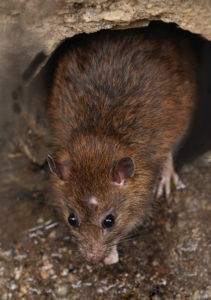Many people are either overly confident in their home builder and insulation or severely underestimate the ability of pests to find and create entryways into homes. We all want to believe our homes are sealed up and pest proof. Here are a few things you need to know about:
-Sealing Up The Home.
-Where to look for gaps or holes inside (and outside) your home.
-How to seal up gaps.
Sealed Homes
For our everyday purposes, homes are well sealed. That being said, they are not designed to be perfectly sealed structures. Changes in seasons, settling, and other factors require joints to be able to have enough flexibility to not crack and fall apart. Even with this leeway, many homes develop new cracks or see more than planned expansion in cracks. All of these separations are enough for pests to make their way into the home.
Desirable vs Inaccessible
Generally speaking, it is more important for a home to be undesirable to pests than completely inaccessible. For example, if an ant finds its way into a crack in the home and wanders around the home finding no food, it is going to want to head out and find something somewhere else. However, if that wandering ant finds a delicious sucker hiding behind the couch, it will recruit all of its friends to clean that sucker stick dry.
Outside vs Inside Sealing
When it comes to sealing homes, far too much effort is spent on the inside. Most of what you see on the inside is intended for aesthetics and designed with a wall behind it that does most of the entry blocking. For example, you don’t need to seal a hole in the wall behind the refrigerator where some pipes go in and out of the wall. You would, however, want to seal up any gap around the piping going into the home from the air conditioning unit.
Where To Look
It is often easiest to do the inspection in stages so you can focus on a few things at a time. If you try to look for too many things at once, you are likely to miss something.
Pipes, Wires & Cables
Start on the outside and look high and low for anything going in or out of the house. Pests tend to see pipes, wires and cables as tree branches that may lead to food. If there are gaps around them, that is a great place to start sealing it up.
Trim and Weatherstripping
Check around windows and doors to make sure everything is solid in their seating, the trim, and the weatherstripping. If something is weak, loose, chewed up, soft, etc. replace or repair it. In an inspection last week, there was a small chunk of wood missing from the bottom trim on a window. As I tested it and started to pull, the entire board popped right out. This was a major entry point that needed to be addressed.
Get Low and Look Up
Humans have an extremely different perspective from pests. We tend to look in the opposite direction of them at the most important points. Go to the bottom of siding, brickwork, bay windows, porches, etc. and get low. When you are low either by crouching or using a mirror device to reflect the image back at you, check for gaps and holes.
The Light Test
If there is a particular area or room of concern, you can check for light coming in from outside. This is especially pertinent in garages and unfinished basements. Simply do what you can to block off light from windows in the room, then turn off the lights and see where light comes in (must be performed during a bright day). Wherever you see light, go over and check it out.
The Draft Test
During the winter, you can check for cold spots. This can be done by feel or by a temperature gun. If going by feel, it can sometimes be easier to wet some of the fingers to pick up on slight differences or air movement. With the temperature gun, look for seams high, middle and low and take some readings. If something stands out as significantly cooler, dive in deeper and find out why. With feel, just move slowly along sections of the home. This is best done in focused efforts as attempting to do an entire home by feel could become quite cumbersome.
Materials
When performing the repairs, make sure that you choose long term solutions that will have the aesthetician’s properties that you want. It is tempting to just start shooting expanding foam into anything you see, but most people end up regretting the look of this down the road. Another common mistake is using steel wool on the outside. It works great for a time, but when it gets moisture collecting in it, rust forms leaving staining streaks. It also diminishes the sealing properties that seemed so perfect at the beginning. If feasible opt for a permanent solution such as replacing a board over just stuffing something in a hole.
Call In The Experts
Finding entry points can be a long process that requires various informational inputs. If you are stumped or simply don’t want to dive in to all of the fun described, there are other options. The sealing and exclusion experts at Rove Pest Control are ready and willing to help out as needed or take over the project for you. Visit us at https://bostonpestcontrol.co to learn more and/or request a quote.

